Welcome to Case #6. Let’s see what you make of this…
Clinical history: pre-operative chest radiograph for rhinoplasty in a 28-year-old male.
1. Middle lobe disease
2. Pleural effusion
3. Lung mass
4. None of the above
In the PA chest radiograph the right hemithorax is smaller than the left and there is apparent pleural thickening at the apex y right costophrenic angle (
arrows). There is slight displacement of the heart towards the right and blurring of the right heart border.
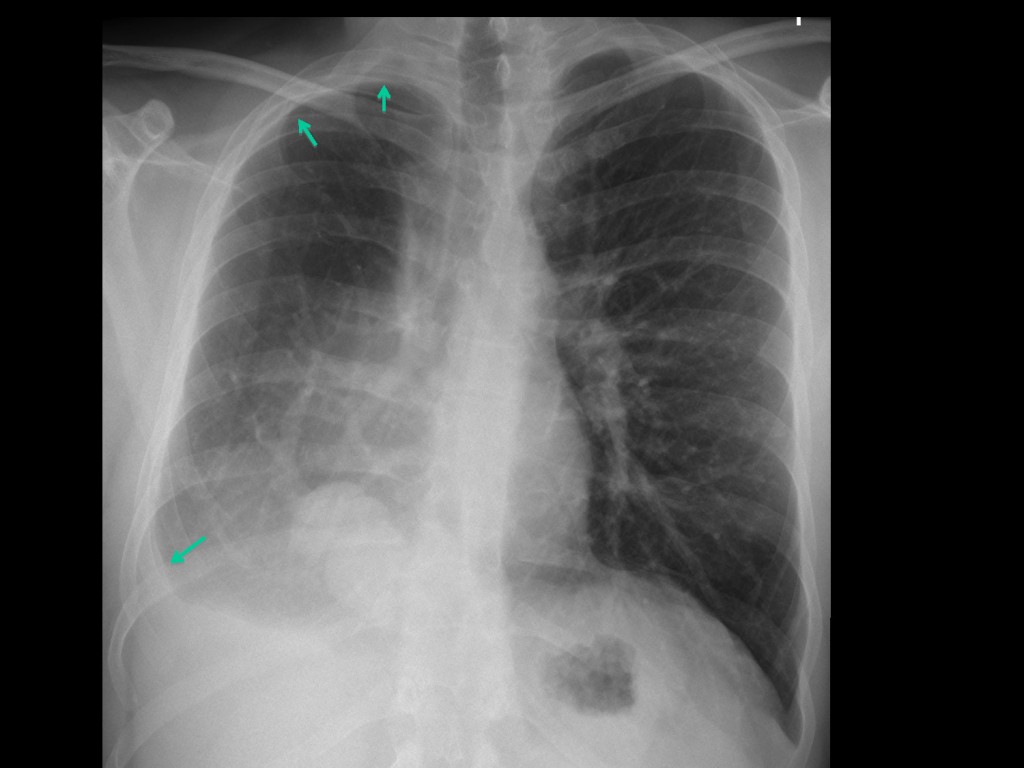
The cone down view shows a vessel cursing obliquely towards the inferior vena cava (black arrows) and a rounded shadow in the lower lung (curved arrow).
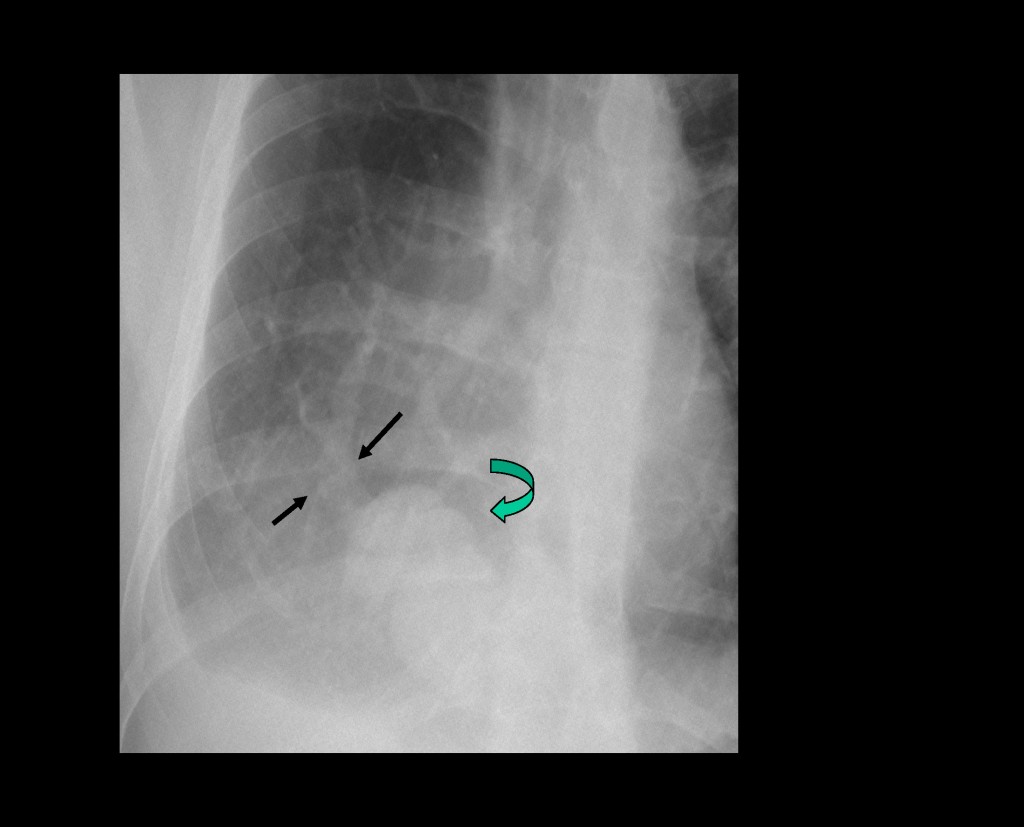
The lateral view shows a vertical retro-sternal band (arrows) and elevation of the right hemidiaphragm.
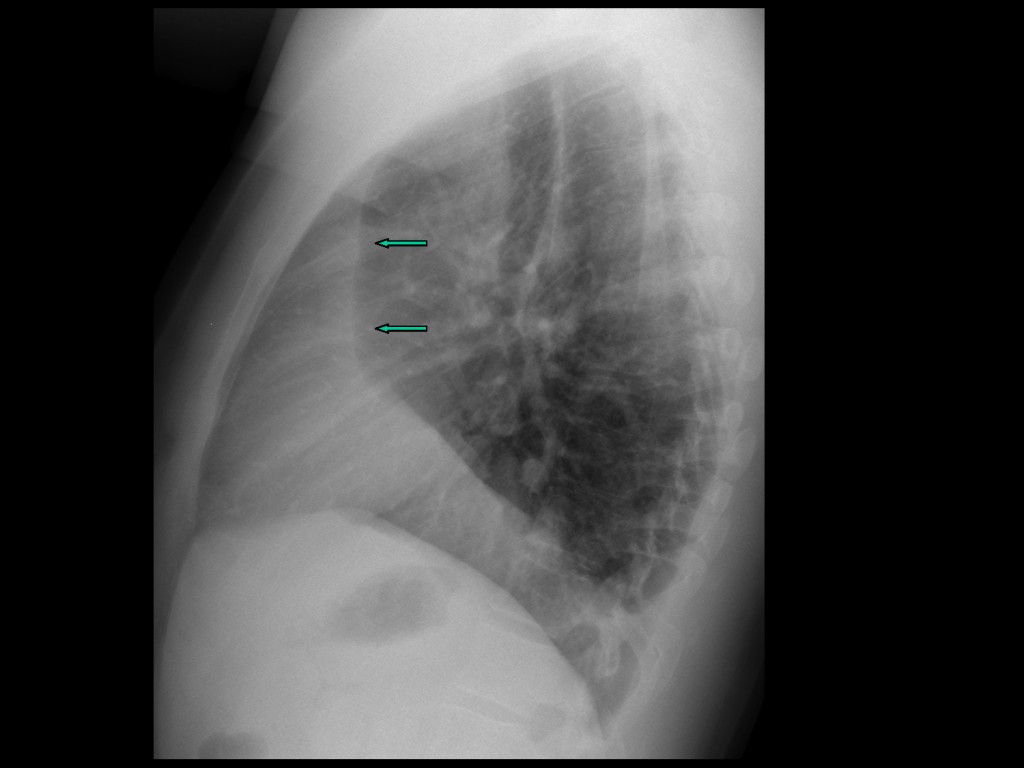
These findings are very suggestive of hypogenetic lung syndrome, secondary to congenital absence of one or two lobes of the lung. It almost always occurs on the right side. About 80% of the patients have anomalous venous drainage of the lower lobe (scimitar syndrome), which is visible in about half of them.
Sagital and coronal CT confirms the anomalous vein (A,B, green arrows). The apparent mass in the lower lobe (red arrows) is due to partial herniation of the liver (diaphragmatic defects are not unusual in this entity). Axial CT shows the small right lung and the abnormal bronchi (C, arrow). The apparent pleural thickening (D, arrow) is secondary to extrapleural fat, which increases and expands to compensate for the diminished lung volume.

Teaching point: congenital malformations are not unusual in adults. It is important to recognise them to avoid confusing them with other pathology.
Muppet adds: don’t rely only on seeing the anomalous vein. You have a 40/60 chance of seeing it!

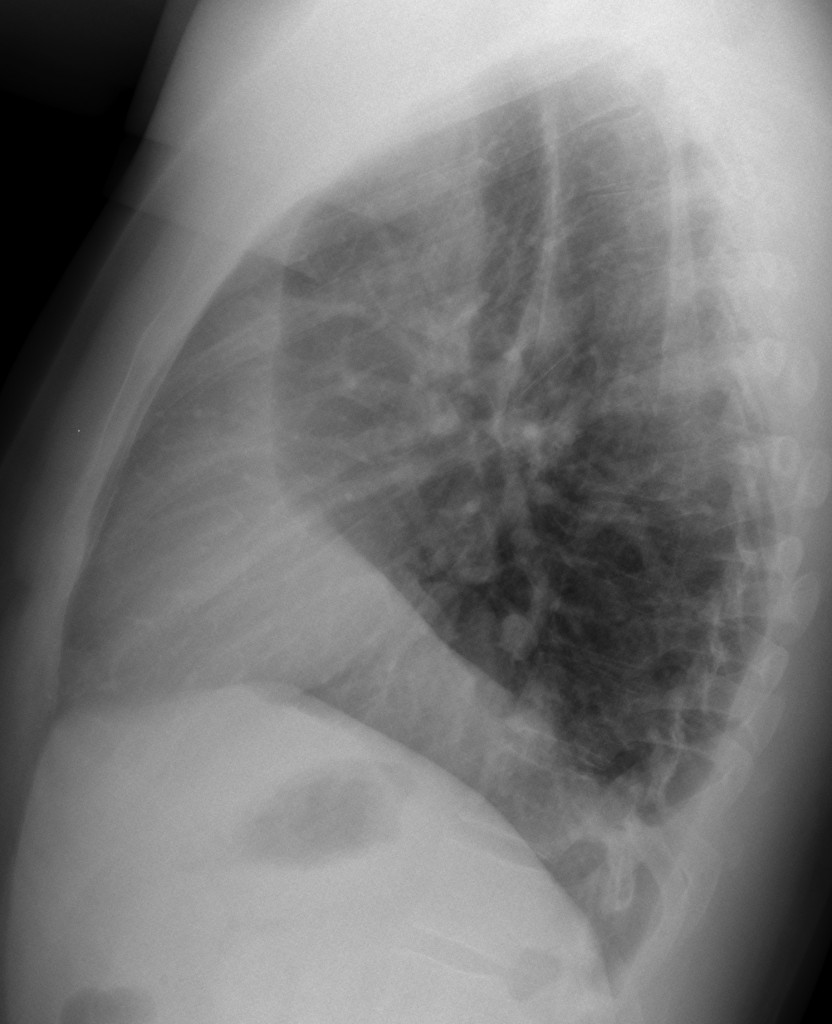
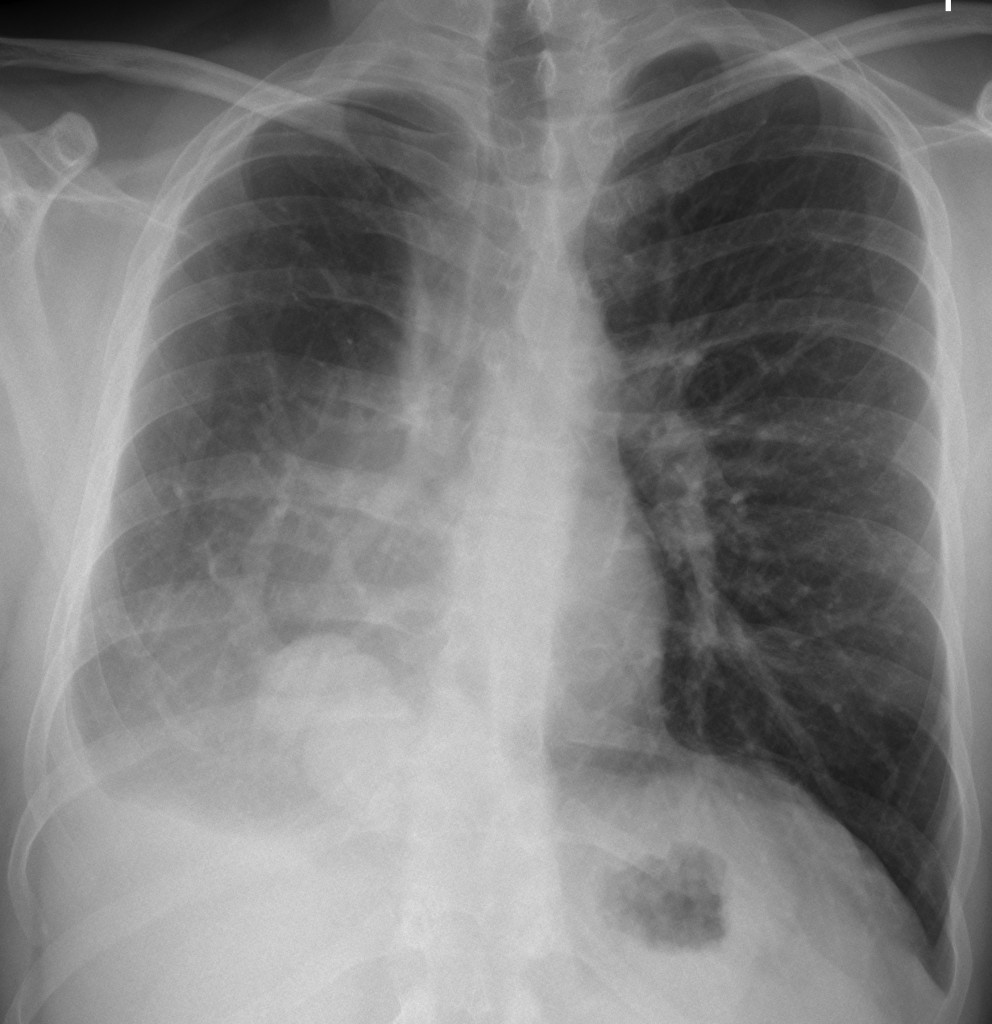






Pleural effusion
Scimitar syndrome +sequestration+ right subpulmonar pleural effusion ?
I totally agree
I second that
Scimitar syndrome with pleural effusion.
Right pulmonary hypoplasia with pleural effusion,the heart and mediastinal structures are shifted to right,tubular structure paralleling the right border of the heart(Scimitar sign) conected with IVC (supradiaphragmatic portion) – anomaulos pulmonary venous drainage.
3. pleural effusion
I think there is right pleural effusion, a thoracic asymmetry with a smaller right lung, right shifted mediastinum, some rounded opacities but in the RIL, not middle lobe(vascular origin probably) and some abnormal vessels in RL!
A CT with contrast enhancement could lighten us! 🙂
scimitar syndrome
You are too smart! But have to brush uo inthe literature. Why is not a pleural effusion?
this is not a pleural effusion [because pleural effusion cause a opacity with posterior upward slope of meniscus shaped contour in the lateral view]
also there is rt volume loss – mediastinal shift towards the ipsilateral side[due to pulmonary hypoplasia] wheras in pleural effusion it will be to the contralateral side
I would rather vote for the lung mass but it would have been too easy (as we all know Mr. Muppet’s creativity;-)
Muppet is flattered! Try another diagnosis. May the force by with you ( Muppet is old-fashioned)
Pleural effusion + diaphragmatic hernia
-loss of volume involving right hemithorax.
-right lower zone opacity silhouetting right cardiac border.
-only the left hemidiaphragm seen on the lateral view.
-blbous tubular opacity in the right paaravertebral region.
possibilities are :
– combined collapse of RUL and RML.
– hypoplasia of right lung with rt paravertebral opacity representing scimitar/sequestration.
sequestration + lung mass ( maybe in right main bronchus)+ pleural effusion
and RUL agenesis
Right diaphragm herniation with prolaps of colon
I would agree with Walo.
hepatic transdiaphragmatic herniation with tortuos hepatic veins draining into vena cava inferior
niceeee 🙂 must said ,i come last night from nightshift in Belgrade E.R. and thinking about this case for a very long time …now i can say,i was right:) thx mr. profesor for nice case you share with us
Thank you. It is rewarding to know that cases are useful and keep you thinking.